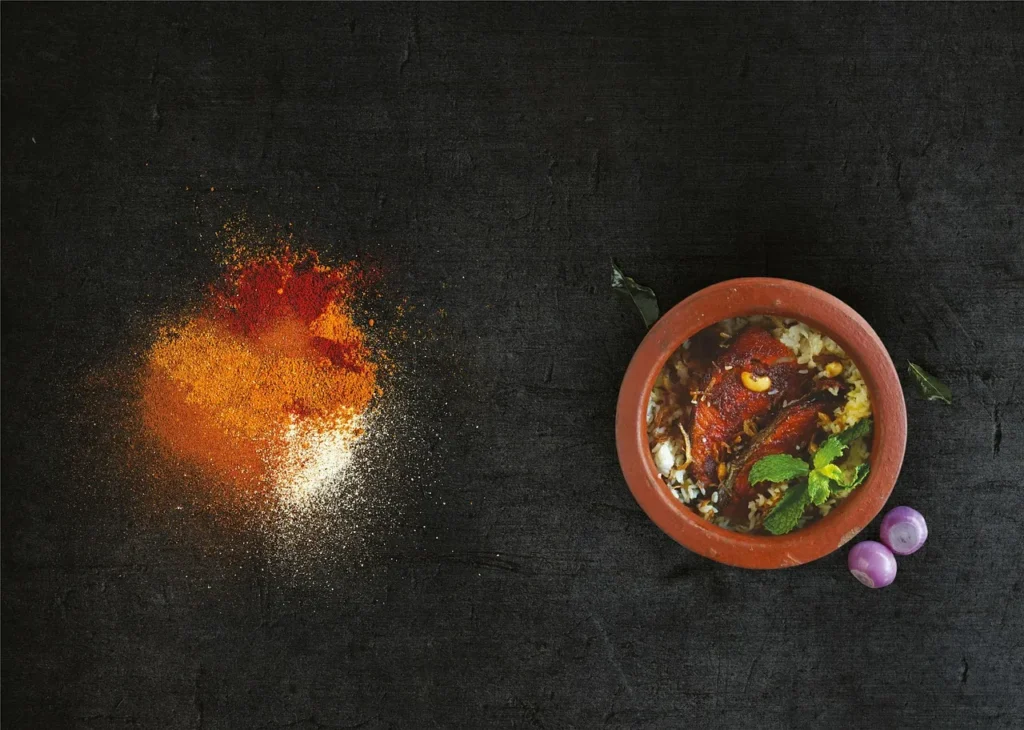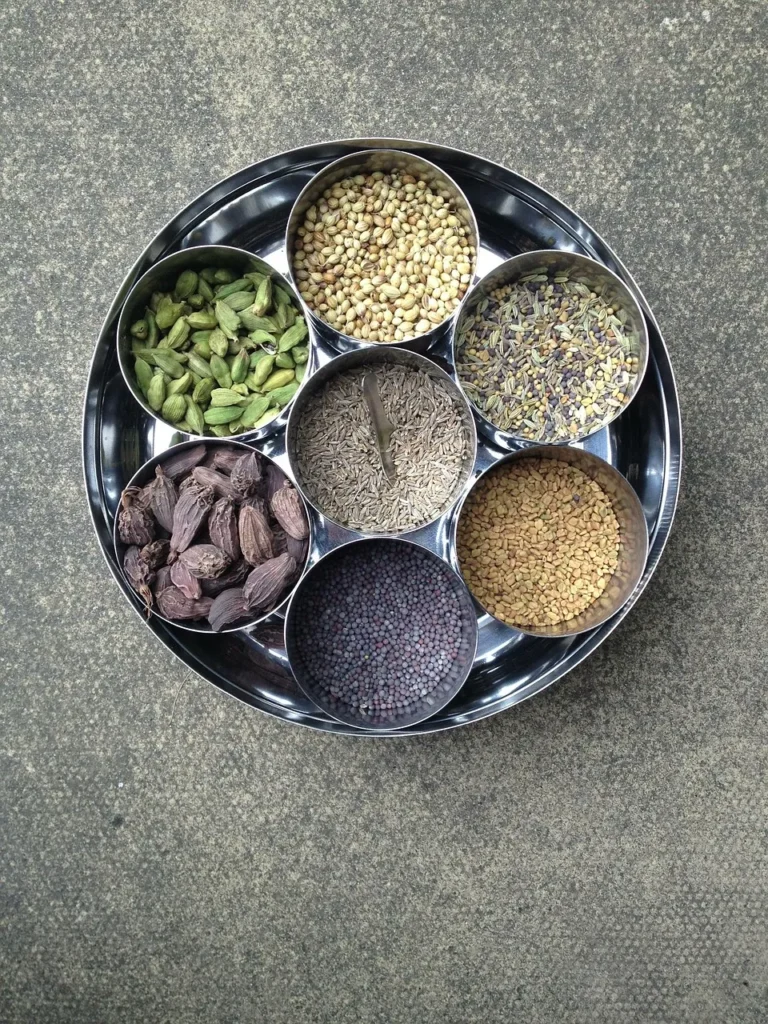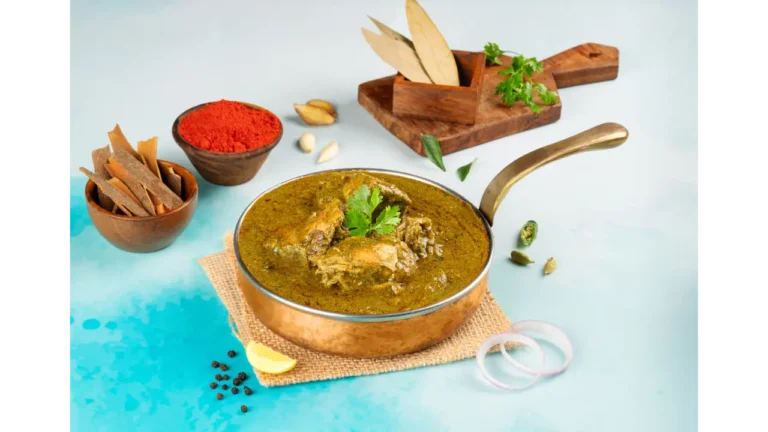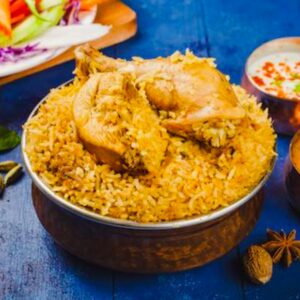Introduction: What Makes Andhra Food So Spicy?
If you’ve ever had an authentic Andhra meal—especially at a place like Nandhini—you know it’s not for the faint of heart. It’s bold, fiery, and full of flavor. But have you ever wondered why? What exactly gives Andhra food its intense, signature kick?
The answer lies in the spices. Andhra cuisine doesn’t just use spices to flavor dishes—it builds entire recipes around them. From the smoky punch of Guntur chilies to the tangy lift of tamarind and the earthy balance of cumin and coriander, every spice plays a key role. It’s not just about heat—it’s about layering flavor in a way that lingers.
This guide breaks down the top 10 spices that give Andhra food its bold identity. Whether you’re a spice lover, a curious foodie, or someone hunting for the best Andhra meals in Bangalore, this article will help you understand why Andhra spices stand out—and how places like Nandhini bring them to life.
Quick Takeaways: Why Andhra Spices Hit Differently
Here’s a quick snapshot before we dive in:
- Andhra food is defined by its bold use of local spices, especially chilies.
- Guntur chili is the most iconic spice and a major flavor driver.
- Spices in Andhra cuisine aren’t just hot—they’re aromatic, sour, bitter, and even sweet.
- Many dishes balance multiple spice notes: heat from chili, tang from tamarind, aroma from curry leaves, bitterness from fenugreek.
- Restaurants like Nandhini use these spices in traditional ways, grinding fresh masalas, tempering with mustard seeds, and balancing flavor with regional spice blends.
Table of Contents
Guntur Sannam Chili: The Backbone of Andhra Heat

No spice defines Andhra cuisine better than the Guntur Sannam chili. Grown in the hot, dry plains of the Guntur district, this chili isn’t just famous in India—it’s exported globally for its intense flavor and heat. It has a bright red color, a smoky aroma, and a heat profile that hits fast and lingers.
In Andhra cooking, Guntur chili isn’t just used for spice—it’s used for color, depth, and even preservation. You’ll find it in nearly every dish, from biryanis to pickles to podis. And at restaurants like Nandhini, it’s the key ingredient that gives their biryani and mutton curry that unmistakable kick.
Guntur chili powder is often made in-house to keep the oils fresh and the heat intact. That’s why real Andhra food tastes so alive it doesn’t just burn, it builds flavor.
Curry Leaves: The Fragrance Behind the Fire
While chilies bring the heat, curry leaves bring the soul. These glossy green leaves are an essential part of Andhra tempering or what locals call “popu.” The moment they hit hot oil, they release a nutty, citrusy aroma that signals the start of something delicious.
In Andhra cooking, curry leaves are used in almost everything—dal, curries, chutneys, and dry stir-fries. But they’re never overpowering. Instead, they sit in the background, quietly lifting the dish with aroma and balance.
What makes them special in Andhra cuisine is how often they’re used fresh and in large quantities. Many Andhra restaurants in Bangalore, including Nandhini, ensure that they use fresh curry leaves in all tempering processes, preserving the authentic home-style aroma that’s hard to replicate elsewhere.
Mustard Seeds: The First Pop of Flavor
In most Andhra dishes, cooking doesn’t really begin until mustard seeds hit the oil. That signature pop and crackle in the pan? That’s how you know the flavor train is about to leave the station.
Mustard seeds are almost always used in the tempering stage. When sautéed in hot oil, they release a nutty bitterness that forms the base of many classic dishes, especially in vegetarian fare like tomato pachadi or dosakaya (cucumber) curry.
They also play a starring role in pickles, especially the famous Andhra avakaya. It’s that deep, earthy mustard flavor that helps balance the intense heat of Guntur chilies and the sourness of raw mango. At restaurants like Nandhini in Bangalore, you’ll find mustard seeds used generously in tempering and pickling to stay true to authentic Andhra flavor profiles.
Cumin Seeds: Earthy, Warm, and Always Reliable

Cumin might not shout for attention like chili or garlic, but in Andhra cooking, it plays a quiet but essential role. These tiny seeds are often dry-roasted or lightly fried in oil at the start of a dish to release their earthy, slightly peppery aroma.
Cumin seeds are especially common in Andhra lentil dishes like pappu, as well as in rasam, vegetable curries, and spice blends like idli podi. They balance out the heat from chilies and provide a warm base note that supports the other flavors.
In places like Nandhini, cumin is part of the signature tempering used in their home-style dal and tamarind-based dishes. It’s one of those spices that, while subtle, is absolutely essential to getting the flavor right.
Coriander Seeds: The Balancer in the Biryani
If Guntur chili brings the fire, coriander seeds bring the calm. These mildly sweet, citrusy seeds are often used to mellow out the sharp heat of Andhra dishes without diluting the flavor. Think of them as the middle note in a spicy orchestra.
In Andhra cuisine, coriander seeds are typically dry-roasted and ground to make masala bases. You’ll find them in biryani spice blends, dry curries (kura), and even pachadis. Their subtle sweetness pairs beautifully with garlic, cumin, and chili, creating the kind of balance that lets the heat shine without overwhelming your palate.
At Nandhini, coriander is used in freshly ground spice mixes, especially for biryanis and vegetarian stir-fries. It’s what gives the food depth and dimension—not just a blast of heat, but warmth and complexity.
Fenugreek (Menthi): The Bitter That Makes It Better
Andhra food isn’t afraid of bold flavors, and fenugreek seeds are proof. They add a slightly bitter edge that cuts through the richness of oils and the sourness of tamarind, especially in long-cooked dishes and pickles.
Fenugreek is used in small amounts, often toasted before being added to a spice blend or pickle base. It’s especially critical in Andhra’s famous avakaya pickle, where its bitterness rounds out the tart mango and fiery chili. You’ll also find it in menthi kura (fenugreek leaf curry) and tamarind-heavy dishes like pulusu.
Used incorrectly, fenugreek can dominate a dish. But used with skill—as it’s done at traditional Andhra restaurants like Nandhini—it enhances flavor, preserves food, and deepens the profile of the meal.
Tamarind: The Tang That Lifts the Heat

In Andhra cooking, sourness is just as important as spice, and tamarind is the hero ingredient that brings that sharp, fruity tang. It’s used to balance out the richness of meat, the bitterness of spices, and the heat from chilies, creating that unmistakable Andhra flavor profile.
Tamarind pulp is added to a wide range of dishes, from simple dals to complex stews like pulusu and spicy seafood curries. It’s also used in chutneys and pachadis, giving them a bright, zesty edge.
What sets Andhra’s use of tamarind apart is quantity and frequency—it’s not a subtle accent. Dishes like gongura pulusu or tamarind dal rely on it as a main flavor driver. At Nandhini, tamarind is used generously and authentically, especially in their lentil dishes and regional gravies, delivering that deep, tangy base Andhra food is known for.
Asafoetida (Hing): A Little Goes a Long Way
Asafoetida, or hing, might not be a spice in the traditional sense—it’s a resin derived from a plant—but in Andhra vegetarian cooking, it’s essential. Just a pinch adds a savory, umami-like depth that ties the dish together.
It’s most often used in lentil dishes like pappu, and in rasam or light vegetable curries. Hing helps enhance digestion and offsets the heaviness of legumes. It also complements the use of mustard, cumin, and curry leaves during tempering.
At Nandhini, hing is used thoughtfully in vegetarian Andhra meals, where its aroma lifts the base flavors without overpowering them. It’s subtle but necessary—the kind of thing you’d miss if it wasn’t there.
Garlic-Ginger Paste: The Power Pair in Every Curry
In Andhra cuisine, few spice bases are as universal—or as flavorful-as as a freshly ground garlic-ginger paste. While not technically a dry spice, this aromatic duo is essential for almost every meat and vegetable preparation across Andhra kitchens.
Garlic brings pungency and bite, while ginger adds heat and freshness. Together, they help break down meat, cut through chili heat, and form the base for thick, flavorful gravies. You’ll find this paste used generously in iconic dishes like Andhra mutton curry, Kodi vepudu (spicy chicken fry), and even in biryani marinades.
At Nandhini, this paste is made fresh to preserve intensity, which is why the curries and biryanis have such a bold, clean flavor. It’s the kind of foundational element that brings out the best in every spice that follows.
Podi Blends: The Dry Spice Powders Unique to Andhra
Last but far from least, podi. These dry spice powders are unique to South India, but Andhra takes them to the next level. Made from various combinations of lentils, seeds, herbs, and chilies, podis are versatile, flavorful, and incredibly shelf-stable.
Each podi has a specific purpose. Kandi podi (made from roasted toor dal and chilies) is mixed with hot rice and ghee. Karvepaku podi uses curry leaves. Others, like idli podi, are used as a dry chutney alongside breakfast foods. What makes Andhra-style podis stand out is their boldness—these aren’t mild garnishes; they’re flavor bombs.
Restaurants like Nandhini prepare house-made podis that reflect this tradition. Whether sprinkled over rice, paired with idlis, or served as a side for meals, they carry the concentrated essence of Andhra’s spice culture in every spoonful.
FAQ: All About Andhra Spices
1. Why is Andhra food so spicy?
Because of its heavy use of Guntur chilies, ginger, garlic, and pungent spice blends. Andhra cuisine is meant to be bold and exciting on the palate.
2. What are the top spices used in Andhra cooking?
Guntur chili, curry leaves, mustard seeds, cumin, coriander, fenugreek, tamarind, asafoetida, garlic-ginger paste, and podi spice blends.
3. What is podi, and how is it used?
Podi is a dry spice blend made from lentils, seeds, and chilies. It’s often mixed with hot rice and ghee or served with idlis and dosas.
4. Where can I taste authentic Andhra spices in Bangalore?
Nandhini is a popular Andhra restaurant chain in Bangalore known for authentic spice-forward dishes like Andhra biryani, gongura mutton, and avakaya pickle.
5. Are these spices good for health?
Yes. Many Andhra spices like cumin, garlic, and fenugreek support digestion, while chilies and ginger have anti-inflammatory properties when used in moderation.
Conclusion: The Heart of Andhra Food Is in Its Spices
From the unmistakable fire of Guntur chilies to the fragrant touch of curry leaves and the bold comfort of podi powders, Andhra cuisine is all about balance through boldness. These spices aren’t just ingredients—they’re cultural building blocks, each with a specific role in taste, tradition, and technique.
Understanding these Andhra spices helps you appreciate why the food feels so alive—and why restaurants like Nandhini in Bangalore are celebrated for bringing that true regional flavor to the city. Their dishes don’t cut corners. They embrace the heat, the aroma, the tang, and the soul of Andhra food exactly as it should be.
If you’re craving real Andhra flavor, now you know what to look for—and exactly where to find it.





